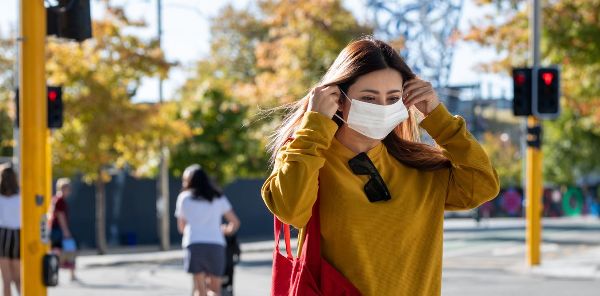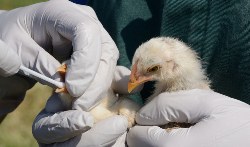On How Women Are Suffering The Most From The Covid Economic Recession

Both here and abroad, the Covid-19 economic recession has been disastrous for women workers and their families. In November, young women below 30 in particular were feeling the consequences :
Of concern is the sustained deterioration in youth employment, particularly for females, with a -4.3% pa drop in filled jobs for females aged below 30, and a 3.9%pa drop for males aged below 30.
Basically, the pandemic has cut a swathe through the female work force formerly employed in tourism, hotel and hospitality work, and in the cinemas whose audiences have been decimated by the virus. This has obvious effects on sole parent households and on households where income from women (in fulltime or part-time work) is essential to families struggling to make ends meet in New Zealand’s low wage/high cost economy.
The pattern of pandemic job losses has also undermined the affordability and availability of childcare. This in turn, has reduced the educational/retraining options available to women displaced by Covid-19, given that during 2020, women have still been carrying the bulk of the domestic workload, and doing most of the caring for children whose school routines were disturbed by the lockdowns..
Around the developed world, women are facing extra domestic burdens even when male partners have been laid off, or are working from home. Ultimately, these realities are compelling reasons as to why any viable plan for sustainable economic recovery launched by the Ardern government cannot be gender blind. The reality is that the pandemic has hit women workers harder. Therefore, any job creation response needs to be targeted at improving the job opportunities for women, at ensuring they can retrain, and at ending their disproportionate rates of under-utilisation.
So far, this hasn’t happened. Priority has been given to “pick and shovel” projects in a construction sector where women have always been under-represented, and undervalued. Change won’t happen without action by female voters. The size of Labour’s parliamentary majority – and the swing from National that delivered it - was very much a by-product of the gender gap that exists between the two major parties on socio-economic policy. It is time for payback. Women have the right to expect (and to demand) payback from Jacinda Ardern for the vital support that female voters have given to her, and to her party.
The virus and women workers
December provided hair-raising evidence from the US of the impact of the pandemic on the female work force. As CNBC reported, a year ago women outnumbered men in the paid US workforce, but in December they accounted for 100% (!!) of the job losses during that month:
The most recent US Bureau of Labour Statistics (BLS) monthly jobs report shows that the economy lost 140,000 net jobs in December, marking the first month of job loss since the economy started adding back jobs in May 2020. All of the jobs lost were women’s jobs, with women losing 156,000 jobs and men gaining 16,000.
Earlier, the New York Times had tracked the unequal impact that the pandemic had been having on women:
For millions of working women, the coronavirus pandemic has delivered a rare and ruinous one-two-three punch. First, the parts of the economy that were smacked hardest and earliest by job losses were ones where women dominate — restaurants, retail businesses and health care. Then a second wave began taking out local and state government jobs, another area where women outnumber men.
The third blow has, for many, been the knockout: the closing of child care centers and the shift to remote schooling. That has saddled working mothers, much more than fathers, with overwhelming household responsibilities. We’ve never seen this before,” said Betsey Stevenson, a professor of economics and public policy at the University of Michigan and the mother of a second grader and a sixth grader. Recessions usually start by gutting the manufacturing and construction industries, where men hold most of the jobs, she said.
More of the US evidence is available here. In Australia, recent research by Monash University has shown a similar disturbing pattern:
While all Australians have been affected by the pandemic, there’s clear evidence of an asymmetry along gender lines. Australian women have lost jobs and/or hours of work at a greater rate than men. They were required to take on additional responsibilities such as home learning, and increased caring and domestic duties.
Their health was also directly put at risk both outside the home as frontline workers (nearly four out of five workers in healthcare and social assistance are women), and within the home from dramatically increased incidences of domestic violence. Not surprisingly, a large national mental health survey found women to be at higher risk of detrimental mental health impacts. Women’s health was also uniquely affected, including surrounding pregnancy and birth.
Those effects will be enduring :
In the longer term, Australian women will generally be less-educated, less-qualified, have less superannuation, and less accumulated wealth, adversely affecting their quality of life, health and wellbeing…. We now have a burning platform, with women emerging from the pandemic with increased risks of poverty and health vulnerability, and greater gender inequity.
The Monash researchers found that those long lasting trends would include the impact that the immediate needs generated by the pandemic ( to pay the rent, feed families etc) were now having on retirement income. Because of the career disruptions caused by child bearing and childcare, women were already faring worse than men even before the pandemic struck. (Women’s retirement savings in Australia, the Monash report noted, are on average half that of men.) The pandemic has made a bad situation worse:
Data from the superannuation fund HESTA showed that of the $720 million drawn down under the government’s early release, nearly 80% were female accounts.
And in New Zealand….
The trends unfolding in New Zealand appear similar. In November, the Statistics Department released this snapshot of the pandemic’s impact along gender lines, upon employment :
“Unemployment rates for men and women rose by similar amounts over the quarter – up 1.2 and 1.3 percentage points, respectively – but looking at quarterly changes right now only tells part of the story,” labour market manager Andrew Neal said.
“The March 2020 quarter captured New Zealand’s labour market prior to the impact of COVID-19. Changes between then and the September 2020 quarter show that while both sexes have been negatively impacted, women have been worse affected.”
This was then spelled out in more detail:
Nationally, the seasonally adjusted number of people in employment fell by 31,000 between the March and September 2020 quarters – over two-thirds (22,000) were women. As a result, the employment rate for women fell from 62.8 percent to 61.2 percent over the period. The rate for men fell from 72.8 percent to 71.8 percent….. Unadjusted, there was a 44,700 person decrease in employment between the March and September 2020 quarters, 24,200 of whom were women.
And it was pretty clear where the drop was coming from:
Of this unadjusted decrease in employed women, 19,700 came from tourism-characteristic industries, such as accommodation, passenger transport, travel agencies, sightseeing operators, and cafés and restaurants. While these are seasonal industries, the size of this fall is unusual and is likely related to additional COVID-19-related factors.
Unemployed, under-used
The same gender bias in Covid’s impact has been evident in the workforce under-utilisation figures :
Underutilisation (seasonally adjusted) increased by 84,000 between the March and September 2020 quarters – 48,000 more underutilised women and 36,000 more underutilised men. Nationally, the underutilisation rate reached 13.2 percent over this period, with a rate for women of 16.2 percent. For women, this came relatively equally from underemployment (up 22,000) and unemployment (up 19,000) between the March and September 2020 quarters, with a relatively small increase in the potential labour force (up 7,000).
And finally, there have been a growing number of women not in the labour force at all:
In the September 2020 quarter, the seasonally adjusted number of women not in the labour force (NILF) rose 1,000, while male NILF fell 6,000.
Responses? Not Yet
As mentioned, the priorities reflected in the work creation schemes created by the Ardern government have not been gender sensitive. Instead, the emphasis has been put on construction projects dominated by job opportunities for men. Similarly, and across the Tasman, the Monash researchers noted that the federal government has not allocated anything like a fair share of its targeted job creation assistance to the employment and re-training needs of women – despite them bearing the brunt of the job losses caused by the Covid recession :
To date, policy responses appear to not recognise or address what some experts are calling the “pink recession”. We propose this presents an opportunity to reverse the adverse health and wealth inequalities through targeted policy solutions. For example, the recent federal budget of about $500 billion allocated just $240 million, or 0.038%, specifically to women, over a period of five years, removing JobKeeper eligibility for childcare workers, and simultaneously ending free childcare access, and limiting women’s workforce participation. Yet, budget stimulus measures focused on male-dominated industries were compounded by accelerated tax cuts, which, for every dollar that flows to women, delivered $2.28 to men.
On February 3rd, the NZ Statistics Department will release its quarterly updated figures on the gender trends in employment and under-utilisation. Seasonally, these may show a brief uptick in festive season employment. Yet once they have assessed their Christmas takings, employers will be tightening their belts for the challenging year ahead. Before Budget 2021 is set in stone, voters will need to let the government know that they expect to see targeted assistance (with dollars attached) being allocated to female employment creation and skills retraining - much as is done already with the assistance /investment/harm reduction programmes available to Maori.
So far, as Bloomberg News has noted, the burdens of the pandemic-induced recession in the US have fallen most heavily on low-income and minority women, and single mothers. The same applies here. Surely a centre-left government that’s blessed with a clear parliamentary majority can recognise and respond to the genderised challenges posed by this reality.
Impeachment: The sequel
If anyone had any doubts about the wisdom of impeaching Donald Trump (again), Trump’s message to his followers yesterday showed how imperative it is to take urgent action NOW.
After dodging three televised opportunities to tell his neo-Nazi fans to cease their murderous seditious ways, he sent out a token White House press release advising them to, hey, behave nicely at the Biden inauguration.
But then, he couldn’t help himself. Anyone who attacked a police officer or who dishonoured the American flag, he said, couldn’t possibly be part of his movement. Sub text: it must’ve been Antifa imposters who did the bad stuff last week.
So there you have it. Trump’s “peace message” is really confirmation of his supporters’ most recent conspiracy theory. The Capitol attack was all the work of Antifa and George Soros. Lock him up!


 Gordon Campbell: On The Coalition’s Awful, Not Good, Very Bad Poll Results
Gordon Campbell: On The Coalition’s Awful, Not Good, Very Bad Poll Results Ian Powell: Policy Vacuum Enables For-profit Corporate General Practice Ownership By Stealth
Ian Powell: Policy Vacuum Enables For-profit Corporate General Practice Ownership By Stealth Gordon Campbell: On Iran Killing Its Rappers, And Searching For The Invisible Dr. Reti
Gordon Campbell: On Iran Killing Its Rappers, And Searching For The Invisible Dr. Reti Peter Dunne: MPs Unusually Quiet On Pay Rise
Peter Dunne: MPs Unusually Quiet On Pay Rise Ian Powell: Cuba And New Zealand: A Relationship Worthy Of Strengthening
Ian Powell: Cuba And New Zealand: A Relationship Worthy Of Strengthening Gordon Campbell: On bird flu, AUKUS entry fees and Cindy Lee
Gordon Campbell: On bird flu, AUKUS entry fees and Cindy Lee